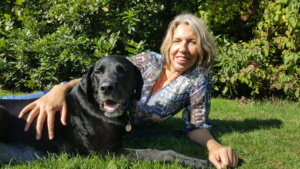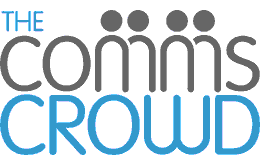The Power of the Podcast
Time to read: 2 minutes
We look at how podcasts are rapidly becoming the favourite child in the B2B marketing class of 2019.
Podcasts are thriving in the UK, nearly 6 million people now tune in each week, according to a survey from Ofcom (September 2018) – with the number of weekly podcast listeners having almost doubled in five years – from 3.2 million in 2013 to 5.9 million in 2018.
While podcasts were traditionally created with consumers in mind, now thanks to the tech evolution, brands large and small are getting in on the action.
They may not quite be the new op-ed, but their soaring popularity has seen many B2B publications introduce podcasts to their websites. Be it paid for ops, interview placements or the opportunity to submit pre-recorded material, the rise of the podcast is certainly opening new avenues to B2B PR professionals like us looking to get clients seen, or in this case, heard.
So should your client be hopping on the podcasting bandwagon?
While podcasts are relatively easy to make, producing and managing a regular branded podcast is a big commitment, and not something I would recommend to any client taking their first steps into the realm of podcasting. Clients need to think realistically about how much time they can dedicate to recording, and the frequency with which they can publish content. The key to podcasts is consistency – if you want to be effective, you should offer something that listeners can tune into regularly.
 Our advice
Our advice
Our recommendation is to make podcasts part of your existing PR and marketing and strategy, complementing other activity. As PRs, we should familiarise ourselves with existing podcasts in our client’s sector, in our case, technology. We should then be engaging with these, and the editors producing them, to establish the opportunities available, such as guest speaker slots, or themes of the month with which clients may be able to get involved. You should then monitor these, and invest time in pitching for slots, or establishing if there are ongoing opps to submit client speakers, or even submit pre-recorded material on a regular basis.
The great thing about podcasts, other than ease of production, is that you don’t necessarily need to duplicate on content as you can utilise written articles as topics for discussion and kill two birds with one stone. In addition, is the advantage of longevity since content can be listened to time and time again.
As PR consultants, we should certainly be looking for opportunities for clients to contribute to podcast conversations (as we do with all other forms of media). It allows the speaker to convey information in a manner much more interactive and engaging than simply words on a page. We should be encouraging clients to augment their PR strategies with podcasts and start honing their broadcast skills in preparation.
10 tips for effectively announcing a funding round
Time to read: 3 minutes
Yes you can be in TechCrunch! We give our top tips for making sure your funding announcement gets the attention it deserves…
 For any start-up, attracting investment is a significant milestone. It’s not just the credibility of knowing that you’re on to something special, but a signal to the rest of your industry that your business is a serious player in the market with a prosperous future ahead.
For any start-up, attracting investment is a significant milestone. It’s not just the credibility of knowing that you’re on to something special, but a signal to the rest of your industry that your business is a serious player in the market with a prosperous future ahead.
At this stage of early growth and investment, being able to PR the news is key and you want to get the best out of the opportunity to get the exciting news out and spread the word far and wide. It’s an opportunity to explain who you are, what your business does and why it’s different from everyone else.
Announcing your new funding not only increases your visibility, but it can also help with recruitment drives, attracting top talent, inviting new investors and driving new business. But with the start-up scene moving at pace right now, how do you cut through the noise and ensure your voice gets listened to? Here are my top tips to securing coverage in top tier publications:
1) Numbers talk – journalists want the news and facts: Its near enough impossible to get any coverage for a funding announcement that isn’t able to include the amount raised. If you can, use the numbers in the press release to illustrate the growth behind your start-up and how you plan to use the funds. After all, this is the ‘news’ you’re promoting.
2) Include as much information as possible: Who are the investors? Are they private, institutional, private equity? If funding was secured in earlier rounds, be sure to mention this too. It shows a continued confidence in your business and tells the story so far.
3) Company background: Clearly articulate what your company does and the problem you are providing a solution for. Who are the founders, what is their background and how big is the company? Explain what the money will be used for – it could be new hires, further technology developments or product development.
4) Validation: There is no greater endorsement than being able to quote one of your investors. It doesn’t necessarily need to be the lead investor but having an investor voice in your press release will add an enormous amount of credibility. They should talk about their reasons behind the investment. It might be the management team’s capabilities or a desire to be part of a growing market. You should also include a quote from your company founder or CEO alongside this.
5) Get all your ducks in a row: Once the press release has been written and signed off by all necessary parties, it is important to come up with a game plan for announcing the news to the market. It is far more effective to spend time getting all the materials and content in a good place rather than rush to get the news out there too quickly. Slow and steady really does win this race.
6) Where do you want to be: It’s likely to be vertical trade press that will be the most interested, but you might also find that technology press, investor magazines and start-up publications are where you need to be. Ask your PR agency to make a list of the titles they think you should be targeting to check you’re all on the same page. Between you, agree which titles should be targeted as a priority and which ones can follow. It’s important to use the announcement as an opportunity to build existing relationships with the press and establish new ones.
7) Consider your outreach strategy: Will it be far more effective to reach out to one key publication with an ‘exclusive’, or should it be sent far and wide to lots of different publications? Pitching the story exclusively to one key publication in the first instance does risk alienating others who might have otherwise covered the story, reducing the likelihood of widespread coverage. But it does normally mean that in return you will get a more thoughtful and comprehensive article.
A recent funding announcement from our client Urban Jungle resulted in us securing an exclusive article in TechCrunch who broke the news first. As a top tier title for the disruptive InsurTech, Urban Jungle were thrilled to be covered so extensively in such a key title and we still managed to generate 24 other pieces of coverage on the same day by sending the release far and wide once TechCrunch had published their story.
8) Timing is key: Simple things to consider – will your key spokespeople be around when the announcement is made? If not, consider holding off until they are back from holiday or more available as any interviews will need to be done that day. Does your company have any other news that it is likely to come out around the same time? A drip feed effect is far more effective than an avalanche of news in a short timeframe. Space the news out where possible and go with the most time sensitive first. Finally, keep your ear to the ground – if you catch word of a competitor announcing news around the same time, consider jumping in before them or waiting until their time has passed.
9) Shout from the rooftops: Well, social media will suffice. Use your social media platforms and networks to spread the news and share links to any articles through Twitter, LinkedIn and Facebook. Encourage your teams to do the same. They should be proud of the company they work for and want to share the exciting news.
10) Keep the momentum going: Securing funding is a huge accomplishment and once it’s been announced everyone will be keen to get on with the job at hand. But don’t forget to keep the market updated on your progress. Announce any new senior and significant hires that have come on board. If you have enhanced your technology platform or are now offering new products, tell people! Use the captured interest in your company as a platform to keep going. Once you have established a voice, don’t be afraid to use it. Ultimately you want to position the senior leaders of your company as leading authorities in the market so you need to optimise every opportunity to do this.
Our Top 10 Tips for live tweeting
Time to read: 3 minutes
Sandra Vogel editor-in-residence issues her survival guide for live tweeting.

In context:
- 500 million tweets are sent every day
- 5,787 tweets are sent every second
- 326 million people use Twitter every month
There are some more mind-blowing stats here.
Now, of course we’re not all exposed to every tweet. But sometimes it is necessary to tweet on behalf of a client, and these are useful stats to bear in mind. Here are two more:
- The half-life of a tweet is apparently 24 minutes. If people haven’t read your tweet within half an hour, then the averages suggest they are not likely to get to it, because a tweet gets half of all its interactions within half an hour of being posted.
- Tweets with an image get 55% more engagement. So the image can matter even more than the words.
Nowhere is tweeting for a client quite so important and quite as stressful as when you are live tweeting an event. There will be a lot riding on what you do because live tweeted events can deliver great profile and original and interesting content. Events can be fast and furious, and it’s not easy to stay on top of everything. You only have one opportunity to get things right – or wrong.
Ten things you can do before you go live so you don’t die trying:
- Get the detailed insider version of the event programme, including whether there are to be any special announcements or launches that the public won’t be privy to till they happen because they won’t be on the public programme. You can pre-prepare a tweet or two with appropriate images so you are not caught on the hop.
- Know exactly who is speaking or otherwise on stage at every moment. Prepare a file that includes their name – spelt correctly – their job title in full, their Twitter handle and any other Twitter handles associated with them – the obvious one is their employer, but there may be others as well. Include any nuggets of info that might be useful for a tweet. Make this file something you can easily access at the event so you can flick in and out of it when you need to.
- Get the lowdown on any special announcements taking place both within and outside of scheduled sessions. If awards are being given get the list of winners, nominees and runners up – whatever is going to be announced live. Get photos of the people in case it’s not possible to take or otherwise obtain live shots at the time. Pre write your tweets and they will be ready to check through and fire off as announcements are made.
- Get as many graphics as you can. Are there slides from presentations that will be useful in a tweet? Get them. You don’t need to have tweet prepared and ready to go for every image, but the images may prove useful to have when you are live tweeting especially if it is tricky getting live photos.
- Prepare at least one tweet for every session you are covering. You might not use it on the day, but then again it might just be what you need to get you out of a problem moment.
- Sort out your hashtags. There will likely be several hashtags that will be in use over the course of the event. Agree the list with your client and anyone who you expect to be tweeting the event live from the client side. If some hashtags must be used in particular sessions, make a note of that beforehand in the same document you’re using to store the speaker details. Keep it structured so it’s easy to find what you need when you need it at speed.
- Set some standards for language and tone. The client may already have some agreed forms of words or phrases – make sure you are fully aware of them and if you think you might lose touch with them in the heat of the moment during the event, put them in your handy reference document. Agree too on the use of punctuation (exclamation marks are the domain of 13 year olds, not professionals), any acceptable or non-acceptable abbreviations, and any words that are never to be used and so on.
- Have an open discussion with the client about logistics – Have an open discussion with the client about logistics – who is tweeting, what are they tweeting, how are you going to divide and conquer? When are you going to get your breaks? Sometimes a client is looking for back-to-back live session coverage. Is that practical? Plan your schedule carefully. You can’t be in two places at once – so where will you be? If two or more sessions running at the same time need to be live tweeted how is that going to happen? Get full sign off on the schedule.
- Do you need access to a backup person or even two – maybe back at the office – who you know will be on hand to do whatever you need from double checking facts to doing on the spot research or taking over from you if there is an emergency?
- Finally, think about what might go wrong and set things in place to head problems off before they happen. Preparation will help you deal with on the day problems either because you’ve already thought of them so they’re not problems at all, or because the process of all that preparation has given you added confidence that you can handle anything.
The eighth year – it’s not about the money money money…

Meet Dill the latest Comms Crowd recruit
Time to read: 1 minute
It’s eight years since Sam Howard set up the freelance collective that is The Comms Crowd. This year she learned the real value of belonging to a team, and it doesn’t have a price tag…
Running a firm, however funky, is always a blur of highs and lows, and this year was even blurrier.
Highs: new team babies, client weddings, discovering a brilliant junior (yes Marcel – who knew there was more than one of you!), finding a prime pitcher, winning another ‘tech for good’ client and so doing some good ourselves, getting to work with some of my favourite PR people now holed up in-house and chucking some great projects our way, and even the odd trip to Belgium.
Lows: personal life was rubbish! When fate dealt her hand this year I almost folded.
But when I had to take a step back from work, the team stepped up and said, ‘Don’t worry, we’ve got this.’ And they had.
You’d be forgiven for thinking that freelancing encourages propagation of the self-centred gene. After all, every day you wake up and in theory you don’t know where the next pound is coming from, and even when you do you don’t know when you are going to actually get it.
But somehow, even though we are freelance and virtual so don’t even hang out in the same office every day, we are a true team. And we are there for each other – not just to cover high days and the holidays but when the kitchen floods, or the car breaks down, or we have one child freaking out, or two children screaming, or three of them fighting, or when we get sick, or our parents get sick, or our dogs get sick -and all in all we are just too distracted to work.
2019 is already shaping up to be a brighter year in so many ways, not least with the addition of our latest recruit, Dill a Mastador pup, a girl this time.
I have always been so proud of the Comms Crowd and what we have achieved but this year I am also thankful.
Writing the American Marketing and PR Playbook: Part II

Time to read: 3 minutes
Jo Detavernier, vice president of Swyft our US partner and the founding firm of our global network, First PR Alliance provides this helpful two part guide for UK tech companies on how not to get lost in translation when venturing across the pond:
Part two UK marketing to US: getting it right
Any modern marketing and PR campaign must be integrated. Integration implies that you will try to have your ‘owned’ (your website, blog, etc.), earned (media coverage) and paid (advertising) channels working together to reinforce one another as much as possible. In many cases ‘shared’ (online shares) is added to the mix, which when added equates to PESO (paid, earned, shared & owned). In what follows we stick to the first three tracks and count shared with earned.
Here is a list oof tools that are available for a marketing and PR campaign in the US. For each campaign you will be making a very unique selection of building blocks. And since you have now been fairly warned about selecting the right market segment, speaking the right language, funding your effort sufficiently and employing the right channels, all of your marketing activities will now be poised to yield the highest possible return.
Owned media
- Website with content and style tuned to an American audience (either a U.S. site or American pages on your global site) and plenty of call-to-actions to help people convert through the sales funnel.
- Blog with articles that depart from the benefits of your products or services as they are relevant to American buyer personas.
- Newsletter to send out content that is geared towards different buyer personas.
- Video content aimed at providing valuable information to prospective buyers.
Earned media
- Distribution of press releases to American news outlets that serve your target audience and to wire services (e.g., Business Wire) when warranted.
- Offering interviews to journalists that attend a trade show at which you have a booth.
- Pitching of stories, on an exclusive basis where practical, to journalists.
- Press tour whereby you visit the offices of journalists for one-on-one talks (this assumes you are a sizable player in your respective industry or are first-to-market with disruptive technology).
- Contributed articles to trade magazines.
Paid media
- Advertising in print or online media.
- Promoted content and/or ads on social media.
- SEA on Google and/or Bing.
- Sponsored posts (native advertising) / advertorials in print or online media.
- Sponsoring of podcasts.
Integrating owned, earned and paid
As mentioned earlier, marketing and PR campaigns that yield the best results are ones that are fully integrated. Pitching interviews on a story in October, promoting posts on Facebook in January and paying for a sponsored article in March can and will have some impact, but they are not nearly as powerful as a fully integrated campaign where you bring everything together in ways that are mutually reinforcing.
Let’s illustrate this with an example. Let’s say you have just conducted a survey about a hot issue in your industry. How can you maximize the impact of that survey to increase brand awareness and stimulate lead generation?
- Owned: You can make the survey report available on your site for people who leave their email address (make sure you respect American CAN-SPAM regulations while you are at it); write a series of blog posts on the results, illustrated by an infographic; dedicate a status update to the survey on your Facebook page; and publish a slide deck on your SlideShare account.
- Earned: You can send out a release about the survey (after negotiating a scoop with a major tech news outlet or a trade publication if it’s got strong enough news value), pitch interviews with your CEO about the results and use the survey to feed your proof points for a contributed article in a key trade magazine.
- Paid: Companies will typically not pay to promote a survey, but the buzz that is created by the survey will allow your now ‘primed’ audiences to be extra receptive to any advertising campaign that you would want to run in the months following the campaign.
In these two blogs we have discussed what some common mistakes are that European companies that are looking to expand in the US will typically make and what advice these companies should heed if they want to succeed across the pond. The American market is in many regards very different from aThe UK and those entrepreneurs and marketing managers who stick to their UK playbook when arriving in the US will do themselves a huge disservice.
This white paper is based on the Swyft white paper How Should European Companies Write Their American Marketing and PR playbook? Swyft is the founding member and organizer of First PR Alliance. For more information on Swyft, visit growswyft.com
First PR Alliance is a network of independent PR and marketing agencies that offers highly-coordinated support spanning borders, time zones, languages and cultures. For more information, visit firstpralliance.com.
Writing the American Marketing & PR Playbook: Part I

Time to read: 3 minutes
Jo Detavernier, vice president of Swyft our US partner and founding firm of our global network, First PR Alliance provides this helpful two part guide for UK tech companies on how not to get lost in translation when venturing across the pond:
Part one UK marketing to US: Common pitfalls
Promoting services and products on the American market looks at first sight very close to how it is done in the UK. Are Americans B2B buyers not comparable to their counterparts across the pond? And are the best means to reach them the same as in the UK? Perhaps surprisingly, the answer to both questions is a resounding ‘NO.’ UK companies need a dedicated American marketing and PR playbook if they want to be successful on the American market.
So in the next two posts we look at what not to do and what to do to crack the US market.
What UK companies do wrong (most of the time)
- Trying to ‘boil the ocean’
Trying to ‘boil the ocean’ is an American expression referring to the trying to accomplish an insurmountable task, or making a project unnecessarily difficult.
Here’s the thing, the American market is simply way too large for any European company to attack all at once, at least not with the kind of budget one normally allocates to attack a single European country (or even Western Europe for that matter).
Omar Mohout, a prominent Belgian professor in Enterprise who teaches at the Solvay Brussels School of Business and Economics, recommends that European companies first target one specific American socio-demographic or geographic segment. For instance, say you developed a SaaS accounting solution perfect for small and mid-sized professional services organizations in the US. You might choose to first target only American law offices in a handful of major metro areas rather than attempt to sell the solution across multiple industries and geographic markets. In other words, figure out how to thrive and be successful in one specific niche, possibly one specific geographic market (for example, the state of Texas). Then you will have something to show when it’s time to convince investors to participate in your next big push to grow market share. Both your organic growth and the extra funding will help make the next chapter in your American expansion story become reality.
- Underfunding the effort
This second mistake is closely related to the first one. Not picking a segment that is small enough for you to thrive in will cause you to underfund your marketing and PR effort. But even the ones that do manage to pick a realistic segment will unfortunately often commit critical budgeting mistakes. For instance, marketing and PR agency costs run higher in the United States than they do in the UK (especially if you are contracting agencies on the West and East Coast). It stands to reason that the cost of any effort aimed at brand awareness and lead generation in one European country is much smaller than attacking the EU as a whole. The same rationale applies to the US, only on a potentially larger scale
The per unit cost of acquiring leads may vary in the US as well, if only because the degree of competition in the tech space is incredibly intense. Even the cost of sponsored posts in national trade websites will cost much more than counterparts in Europe. Google Adwords campaigns are tricky given the competitive nature of many U.S. tech businesses; it’s not uncommon for bidding amounts run so high as to make the ROI on leads untenable. Talking about Google AdWords, is about 13% more in the US than the UK.
What can you do to avoid underfunding your marketing efforts? Aim for what you can reasonably afford — don’t attempt to overreach on market size and in the process underfund the effort. Do plenty of research into your target market and what works and doesn’t work when it comes to marketing and PR. Don’t be shy about reaching out to local agencies for advice. What you learn from them could be the difference between success and failure.
- Not speaking the language
Well we do share a language but speaking the right language doesn’t only pertain to how things are said. It also has to do with the core messages of your marketing campaigns and the manner in which you articulate them. Clearly American culture is very different from UK culture. A simple edit of a brochure or website into American English will not suffice. You have to ‘think’ like an American to attract their attention in an authentic way. Otherwise, you risk alienating your target audience within seconds.
- Picking the wrong channels
You have selected a segment that you want to target, but now the work begins. You will need to select the best mix of channels to achieve your marketing and PR objectives given your budget and target audience. If you are new to the market you will have to spend a majority of your time creating awareness. Don’t forget to track your inbound leads and properly attribute their source (e.g., Twitter ad, Google AdWords campaign, trade show, etc.) in some kind of spreadsheet. Fortunately, many marketing automation platforms (HubSpot, Pardot, etc.) do a reasonably good job at lead attribution. That said, lead attribution will only partially help inform your marcom spending decisions. Take SEA (Search Engine Advertising) for example: For European marketers, SEA equals Google AdWords. But Bing had in January 2018 a 23.7 % share of the American search engine market (source: Statista). While it’s not the largest search engine in terms of search volumes and ad spend, you can’t afford to ignore it in the long run if you hope to pick up market share against your competitors.
Now we know the mistakes to avoid, the next post will look at how UK companies should write their American marketing and PR playbook.
The home-based PR – it’s a (perfect) dog’s life
Time to read: 3 minutes
Sam Howard writes:
Seven years ago when I gave up my ‘proper job’ running the PR division of a large London agency, the primary motivations were to get back to doing real PR, spend more time with my son and to finally, finally have a dog.
After serving a six month probation to prove I could hack freelance life, I ‘rescued’ Moby – a five month old Labrador cross (crossed with ‘something huge’ was all the charity could tell me). So that was it – no going back. Moby was my insurance policy to make sure I never took a proper job again!
In the early days it was fortuitous that my skills were not so much in demand, as Moby, it turned out, wasn’t sure he was best suited to being a PR hound. As vocations go I think his early preferences would have been to be the companion of a side-order chef, a WWE wrestler or a clown.
He was a turbo-charged Labrador. Owners of bull breeds would put their dogs on leads when they saw Moby tearing across the field in their direction. On an early foray, an experienced dog walker eyed him with reservation as he tussled a Rottweiler to the ground and chewed affectionately on its throat. “Hmm,” she said as we discussed potential heritage, “I’d say he’s part black lab part something awful.”
Whatever he was, he was not office material. He chewed my chair, my shoes and my arms when nothing else was available and only interrupted his endeavours to work out how to open the fridge door or to bay loudly like a Baskerville hound if he noticed I was on a conference call.
Eventually shamed into admitting we had the worst behaved dog in the park we registered for duplicate dog training classes in two boroughs as one class didn’t seem to be enough to quell his, er, enthusiasms. Thinking back I should have expensed this as ‘staff training’.
But in our own way life began to settle down into some sort of freelance fashion; mornings began with Moby pinning me down in my sheets and barking into my face. After breakfast, and Pilates in which he insisted in partaking, a very long walk and then lunch, Moby would finally concede to have a power nap while I got on with some work. On waking it was no rest for the busy with a full on training session, again with hindsight not sure who was training who given how many sausages we got through. Finally a few more hours of focused napping until Elliot came home and Moby could torment him for a few hours while I finished off. End of work was announced by my streaming The Archers as I pottered around the kitchen, and on hearing the theme tune Moby would be ecstatic and parade round the house for at least half an hour with a cushion in his mouth to celebrate the imminence of meal time.
By now Moby was enormous, he towered over proper Labradors, and with his domed head, golden eyes, heavy jowls, velvet ears, sleek coat and beautifully muscled physique, he was a real head turner, the office Romeo if you will. For he was, it turned out, a Labrador Mastiff cross. Here, in the UK that’s a happy accident but in the US it’s a deliberate combination and they are called Mastadors, a breed much prized for their impressive physical build and also their wonderful temperament.
We still had to wait a bit longer for the temperament…
But after a somewhat protracted adolescence, Moby was around two when the fog finally lifted, there he was, the most majestic, most level-headed, dignified dog, an absolute ambassador for the breed – he went from being the worst to the best behaved dog in the park.
And Moby excelled as an office hound, a perfect patient companion, and accordingly went on to receive employee of the month every month for the next five years. He was excellent on and off the lead, in cars, on trains and buses. And thanks to flexible working, he got to go to the seaside every month to dig in the dunes and paddle in the sea by day and lay by an open fire and dream of sheep while I worked in the evening. He regularly went to business meetings where the techie boys tried so hard to not lose their thread, and to uni lectures, where his Barrack Obama good looks and Bill Clinton charisma had the USC girls swooning in unison. He was even the inspiration for our brand identity – how many dogs can say that?
And in return Moby made sure that every working day was a pleasure: that Mondays were no biggie; that office politics were no more than an insistent stare if I had the temerity to sit down at the laptop before finding him a treat; and that in seven years, I never once knew the loneliness that others talk of when working from home.
So as my former agency colleagues continue to climb the corporate ladder and now have every right to look down on all they survey from truly impressive heights, I am jealous not at all – for they may have the power and the glory, but I had Moby, Moby the Mastador.

So what makes you the expert??
Time to read: 2 minutes
How can you prove your clients are the zen masters they say they are? We go in search of those elusive proof points.
We know journalists get hundreds of pitches every day. Their mailboxes and twitter feeds are full of companies competing for airtime, all offering informed, relevant comment. But why should a journalist listen to what they have to say?
Your client may be a world expert in their field, whether that’s digital widgets, cloud computing or new legislation.
But if you can’t make them instantly credible in the eyes of the journalist, they’ll go straight to the deleted folder.
Once a client wanted to remove a statistic from our pitch because a) he thought it wasn’t that strong and b) he wasn’t sure it was accurate. We pointed out that, while we understood his concerns, we needed something concrete to show that they were well established, had delivered a lot of great work and hence were worth listening to. We thought the number was convincing, but if it couldn’t be used, it was vital to have an alternative.
One way of gaining credibility is to name high-profile customers. This isn’t easy, unless you can persuade your client to include ‘permission to be named in marketing materials’ in their standard contract (yes this can happen). However, there are creative alternatives. For example, when one customer mentioned that they worked with one-third of the London Boroughs, we didn’t need names – the statistic was enough. Similarly, the phrase ‘working with law enforcement agencies’, as was the case with one Comms Crowd client, speaks for itself.
Demonstrating credibility can be even more difficult in the finance sector, where every ‘expert’ has professional qualifications and offers similar services, and you will have to dig a little deeper. Links to topical issues can help, as can the ability to understand both sides of an issue. We’ve obtained a lot of coverage for one client on the topic of angel investment because not only does he advise clients on obtaining investment, two of those clients have appeared on Dragons’ Den and he also invests as a business angel himself. So he is extremely credible.
Another option is to work with experts whose credibility is a given, such as academics. Hitching your wagon to a star, to quote Ralph Waldo Emerson, can be an effective way of enhancing your own credibility, particularly if your opinions complement those of the expert.
If you’re still struggling for hard facts, the solution may be your client themselves. One of our favourite clients is someone who really ‘gets it’ where journalists are concerned. No matter how busy he is, he’ll quickly give us a short, snappy, often controversial comment to pitch which shows he knows his topic inside out, then makes himself available at short notice if the journalist wants to speak to him. As a result, he punches well above his weight in terms of influence and coverage.
It’s not easy finding proof points and can be even harder to persuade your client to let you make them public. However, it will be time well spent in establishing them as a credible source.
Journalists working with PRs – how to avoid conflict of interests
Time to read: 1 minute
Can a journalist comfortably hang out with PRs ?

Our in house writer and working tech journalist Sandra Vogel explains how it works for her…
There are some who say journalists and PRs are chalk and cheese. They want different things, they see the world in different ways, and it is impossible to work in both camps.
But that’s not true. It is possible to be a freelance journalists who also works with PRs. There can be significant benefits to working in both camps.
Just because you can freelance – doesn’t mean you should
Time to read: 2 minutes
Sam Howard set up our virtual PR agency six years ago, and the business model is now gaining in popularity, so the demand for freelance comms proffesionals is out there. But just because you can freelance doesn’t mean you should. Here are her top tips for determining if you would be happy as a freelance PR:
Reasons to go Freelance: 1, 2, 3…
Because you want to – not because you don’t want to do something else
1) You actully want to freelance – sounds obvious but don’t do it just as the lesser of two evils or because you can’t find a ‘proper’ job, or because you think you will make way more money than you do now.
In my view, going freelance so you can hope to work every hour of every day to make loads of money is a guaranteed formula to make yourself utterly miserable.



